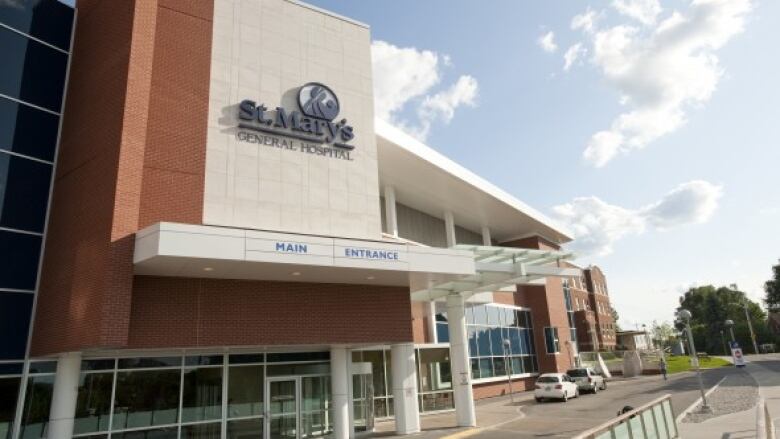St. Mary's General Hospital releases new strategic plan
Plan calls for increasing collaboration with tech sector and improving care for groups like refugees

St. Mary's General Hospital released a newfive-year strategic plan Friday morning, a year into a pandemic that has tested many organizations' abilities to adapt their plans.
The document anticipates the need to continue responding to COVID-19 while also considering which changes brought by the pandemic will be integrated into post-COVID operations, president Lee Fairclough said.
"One is virtual care," she said, "and adjusting the way that we actually provide more connected care to patients. And the other is really ... about how will we innovatein new ways in healthcare."
The plan names five strategic priorities, including number four: embracing new ways to innovate.
That section calls for collaborating with the Communitech community, the University of Waterloo, McMaster University's regional campus and the other hospitals in the region to address the future of healthcare.
It wouldlookfor new ways to analyze data to inform decisions, Fairclough said, while also respecting patient privacy.
Improving equity in healthcare
While some patients may be concerned the move to embrace virtual care and increase the reliance on technology could lead to a reduction in quality in-person care, Fairclough said it won't replace in-person interactions where necessary.
"We've also heard from patients that they have liked the experience of being able to do, let's say, virtual follow-up type clinics where they're feeling welland they don't need to journey into the hospital," she said.
Another priority area for the hospital involves working with partners in the community to "transform connected care." This includes working with members of the KW4 Ontario Health Team to develop care strategies for people who are elderly, homeless, or refugees.
"I can give you a really practical example that's happening through the Ontario health team," Fairclough said. "It's translation services. What is our ability to support access to care where people can actually also have access to translation in that care? And that unto itself would be a change that we can make as a group of partners that would make a big difference for patients."
The need to focus on responding equitability to the needs of different patients was highlighted during consultations with the hospital's patient and family advisory ocmmittee, Fairclough said.
It's also clear from data documenting inequities in healthcare in a broader societal context, she said.
Other strategic priorities outlined in the document relate to improving the quality of care at the hospital, building a healthy and resilient staff and preparing for the needs of a growing population.
Underpinning all of the priorities is a commitment to financial sustainability and workplace health and safety.
Asked whether the plan could withstand another curve ball such as the COVID-19 pandemic, Fairclough saidit's a living document and staff are prepared to be flexible where needed.
COVID-19 remains a big unknown, she said.












_(720p).jpg)


 OFFICIAL HD MUSIC VIDEO.jpg)
.jpg)



























































































